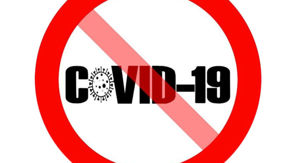With almost 60% of employees saying they are very or extremely interested in participating in upskilling programs per a joint Gallup-Amazon survey, chances are your employees are interested too. So why are 57% of workers taking their education into their own hands? Most corporate learning programs aren’t cutting it because they lack the necessary element of creativity.
When I was brought on as Head of Innovation and Creativity at Disney 10 years ago, I was asked to embed a culture of innovation and creativity into the company’s DNA. The company had recently bought Marvel, Pixar, ESPN, Lucasfilm, and ABC, and all those teams were working separately with different innovation processes. Additionally, the company realized it needed concrete training and tools for innovators — just like lawyers go to law school and IT experts take computer science classes.
It took me four tries to get it right. First, I brought in innovation consultants. They were good, but not much changed. Second, I launched an internal innovation team. People outside the team thought, “Innovation must be their job, not ours.” Third, we partnered with young tech startups through an accelerator program. Innovation happened but only touched about 1% of our population.
We had failed. Then, the “Aha!” moment happened.
I recognized that we couldn’t just tell people to think differently, take risks, or get in the room to brainstorm. We had to give them the tools to make creativity at work second nature. A chef with a full set of knives is more confident in the kitchen than one with a single, dull blade; having the right tools empowers people to excel in their craft. To ensure that our teams could be creative at will, we needed to give them resources to prompt their creativity.
At this point, I set out to create a tool kit to take the intimidation out of innovation and make out-of-the-box thinking accessible and fun to busy employees. And I wanted them to stop feeling the boredom at work that around half of workers struggle with daily. The outcome was lots of creativity that didn’t feel like drudgery.
The secret ingredient to reinvigorating corporate learning programs in this way is recognizing the immense power of creativity to transform upskilling from a mundane task into an exhilarating journey. By integrating creative training methods and innovative upskilling tools, we can ignite a passion for learning in our employees, ensuring they not only gain new skills, but also enjoy the process, fostering a culture of continuous growth and innovation.
Fueling the Creative Spark to Revive Your Training Starts with You
By applying a layer of creativity to the way you design your training, you can energize your people. Most existing training models — especially online ones — are incredibly dull and uninspiring. Click on multiple-choice questions. Get at least an 80%. Wash and repeat. There’s no engagement, just the “opportunity” to check off a mandatory box.
If you want your training and upskilling to be exciting, you need to do things differently. Otherwise, you’ll keep getting more of the same disastrous results. Currently, 18% of employees say they’re actively disengaged; just 32% are engaged. That means half of your workers are likely somewhere in the middle and deserve something better than another traditional training.
Until you start being creative with your training, you’re unlikely to create experiences that make professional development enjoyable rather than dull. Start by helping your people hone their imaginations by practicing creative behaviors. Otherwise, no one will be able to transfer the creativity they experience during workshops to their everyday roles.
Below are some components that I encourage you to add to your company’s creativity and innovation tool kit:
1. Encourage “What if?”
When you talk to people about their obstacles to innovation at work, they usually respond with a few common answers like, “We don’t have the resources” and “We’re too heavily regulated.” With the question of “What if?” you can break down these obstacles.
Making “What if?” a go-to question is simple. First, write down all the rules of your industry. Second, pick one rule and think of provocative ways to break it so it no longer applies. This allows you to access your river of thinking, which your expertise and experience enable. As long as you’re willing to think differently, you can reach the depths of your river of thinking.
Full disclosure: I didn’t create our “What if?” strategy. Walt Disney did. He was frustrated that he couldn’t create a fully immersive experience by pumping mist or heat into movie theaters during Fantasia. Therefore, he wrote down all the industry rules for movie theaters: people must go at a set time, sit in a seat, and only see what the theaters are showing. Movie producers like Disney couldn’t control the environment. So, he took that industry rule and said, “What if it didn’t apply, and I could control the atmosphere by taking our movies out of the theater and making the characters three-dimensional?”
This was pretty provocative thinking at the time. How could he possibly have pirates, cowboys, and princesses in one place where they could interact with regular people? The answer was Disneyland, a place made up of themed lands where visitors could immerse themselves in Walt’s visions — and he could control every aspect of the environment.
2. Respond “How else?” to challenges.
This is another creativity-prompting tool initiated by Walt. He asked himself, “How else?” when thinking about how to differentiate Disneyland from other attractions. The result? Customers were called guests, and employees were called cast members. He simply re-expressed the relationship between consumers and workers. His “How else?” created an unparalleled level of hospitality that other organizations have continuously imitated.
How can you make “How else?” work as you explore fresh ways to train your people? Start with an exercise. Let’s say we’re going to open a car wash. What are the three most essential ingredients for the business? Water, soap brushes, and vacuums. Now, what if we reframed our car wash by asking, “How else?” We might turn it into an auto spa where scrubbing rags were reframed as “luxurious robes.”
“How else?” can be used in any area of business. At Disney, we used “How else?” to increase quarterly results by 3% without raising gate prices. Rather than upping our admission costs, we instead focused on reducing the time guests spent standing in line. We found a pharmacy in Tokyo that uses RFID technology to reduce its lines and borrowed the concept, leading to Disney’s RFID-enabled MagicBand. The product gave guests more time to play — and spend. It was one of the biggest single revenue-generating hits in Disney Park history.
3. Give people time to think by encouraging playfulness.
Most employees are given no time to think. That’s why they get their best ideas outside the office. Our conscious and subconscious brains tend to be closed off on the job. When we’re free to think, such as while showering or exercising, we are often suddenly more creative and playful.
One way to unlock creativity in this way at work is with laughter. The moment I hear laughter in one of my training sessions, I know our attendees are in a creative mindset; the session opened the door between the conscious and subconscious brain. At that point, they can start engaging in that more creative, playful mindset.
I recommend starting with an energizing activity I call “Monsters in the Closet.” Have everyone pair up and give them one minute to draw their favorite monster one line at a time, with partners alternating turns with each line. When the minute is up, tell them to name the monster using a combination of their first or second names. Then, go around the room and have each pair present their monster, sharing its name and superpower. Something as simple as this can encourage laughter and playfulness, getting your people in the mindset where their best ideas can form.
By encouraging playfulness and removing the pressure to be taken seriously or get things right on the first try, you can get people to be more open to thinking about issues from new perspectives.
4. Make training a game.
Trainings can be a slog. Especially if you’re doing trainings virtually, incorporate gaming to keep people engaged. Gaming is exciting and helps the material stick. In a study of 2,000 children, those who played video games for three or more hours a day performed better on cognitive skills tests involving working memory compared to those who had never played video games. Gaming can also improve memory and cognition in older adults, as well as increase productivity on new teams and improve collaboration on virtual teams. At its essence, gaming is fun and makes learning less tactical and more experiential.
Take Fortnite. It’s creative problem-solving 101. You get to choose your team, your adventure, your tools, and even your costume. Players can come together to solve challenges in real time from any location. By adding gaming elements to your online training, you completely change the tenor of the experience. And experience is especially important to Gen Z employees. With gamified online training, you can give them the exciting, memorable experiences they want.
Virtual reality is becoming yet another way to elevate your training. Your organization can have a virtual auditorium, campus, soccer pitch; you name it. Employees can put on Halloween costumes when online or set up virtual sticky notes for each other. I once did a creativity workshop with a colleague in South Africa where we both wore VR headsets and interacted in a world that didn’t exist. She gave me a virtual pen. I wrote on a piece of virtual paper with the virtual pen. Then, I handed the virtual paper back to her. It was incredible and incorporated auditory, visual, and kinesthetic learning.
While incorporating this technology might require devoting more budget to training, it will pay off in the long run. Almost three-quarters of employees feel they aren’t reaching their full potential at work because of a lack of development opportunities. Plus, 76% of Millennial employees believe that professional development opportunities are one of the most critical aspects of company culture (and other generations probably feel the same).
By shifting your focus from merely equipping employees with new aptitudes to transforming their attitudes toward learning and problem-solving, you can unlock a new realm of possibilities. Imagine a workplace where every employee is not only competent, but also creatively engaged and intrinsically motivated. This is the future of training — one where the dread of monotony is replaced by the excitement of continuous growth and exploration. By embracing this paradigm, we don’t just respond to what our employees demand and deserve; we create an environment where boredom is long gone and every day is an opportunity to innovate and excel.











